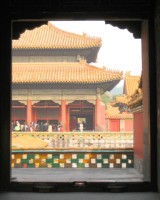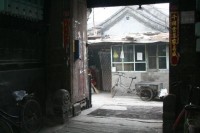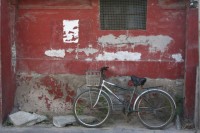Sat 3 Nov 2007
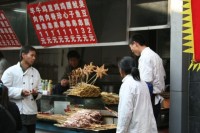
In virtually every guidebook you’ll read about China and other developing countries, there is a section describing the dos and don’ts (well, mostly the don’ts) of eating.  Cardinal sin number one in many books is eating the street food – that is, food sold by vendors that you can find on virtually every street in Beijing. If you haven’t already guessed it, I don’t follow their advice.
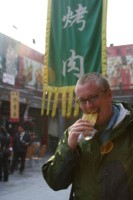
Street food is the essence of a city’s cuisine. If you ask New Yorkers what their favorite dining memories are in NYC, a surprising number will tell you about a hot dog vendor on the Upper East Side or a gyro stand in Midtown. I’m sure there are ongoing debates among the Hispanic immigrants in Nashville as to which taco truck on Nolenseville Road dishes out the best tacos (in my non-Hispanic opinion, the taco truck parked in a parking lot on the right side of Nolenseville Road just north of 1-440 is the best).   Â

A substantial number of a city’s residents rely on these vendors to fill their belly on their way to work in the morning, to provide a much-needed snack during the afternoon or to provide a quick and cheap dinner after a hard day’s work. If you love food, avoiding street food in a city is akin to an artist visiting Paris and skipping the Louvre.Â
There are, of course, a few guidelines to follow. You can’t just dive into the first beef skewer that’s being cooked on a makeshift grill on a side street because the downside of bad street food (especially in Asia, where the “facilities” are not quite 5-star in most places) can be so bad as to require professional counseling upon your return home.
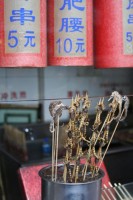
Without further adieu, I present to you the Hughey Street Food Guidelines:
-
Follow the Crowds. If the locals are lining up to sample the offerings, you should be fine. Not only do you have the natives’ seal of approval that the food is not poisonous and is probably delicious, you have better assurance that the food hasn’t been sitting around for hours (or days…).
-
Is it Clean? If the vendor takes pride in keeping his stall or cart clean, there is a better chance that he cares about the safety of the food. Many people have an assumption that the kitchen at a restaurant is always better than street food, but you usually can’t see the kitchen at a restaurant. For all you know, there is a local colony of rats residing behind the kitchen door. With street food, it’s all out in the open.
-
Do Your Research. Try to find out the local delicacies of a city before you get there. Not only will you get to sample the best the region has to offer, you’re more likely to get sanitary food because you’re eating what the locals eat (and not something the street vendor has cooked for an unknowing tourist).
-
Know Your Limits. Not everyone’s stomach has superpower bacteria-fighting abilities. Even though Johnny is calling you a sissy while he downs a grilled seahorse (as we saw in Beijing the other day), you may want to stick to the fried noodles with vegetables.
-
Small Doses. The beauty of eating street food is that you can sample lots of different items because, in many cases, the street vendors huddle in groups. If you pig out on one item, you may not leave room for that delicious fried caterpillar right down the street.
-
Relax. If you’ve traveled across the globe to visit an exotic land, don’t dampen the experience by always playing it safe by eating in the tourist restaurants or the local McDonald’s. You’ll miss out on some great food and even better stories.




